Wellness
10 Best Vitamin C Food Sources To Add Into Your Diet
What is vitamin C and what does it do
Vitamin C, also known as ascorbic acid is a water soluble vitamin essential to the body. (1) It is an antioxidant commonly used to strengthen the immune system and to reduce the risk of infections. (2,3) Besides that, vitamin C also helps in collagen formation, wound healing, and improves iron absorption. Vitamin C can be naturally found in various types of fruits and vegetables, such as guava, kiwi, and capsicum. (1)
10 vitamin C rich foods other than oranges
- Guava
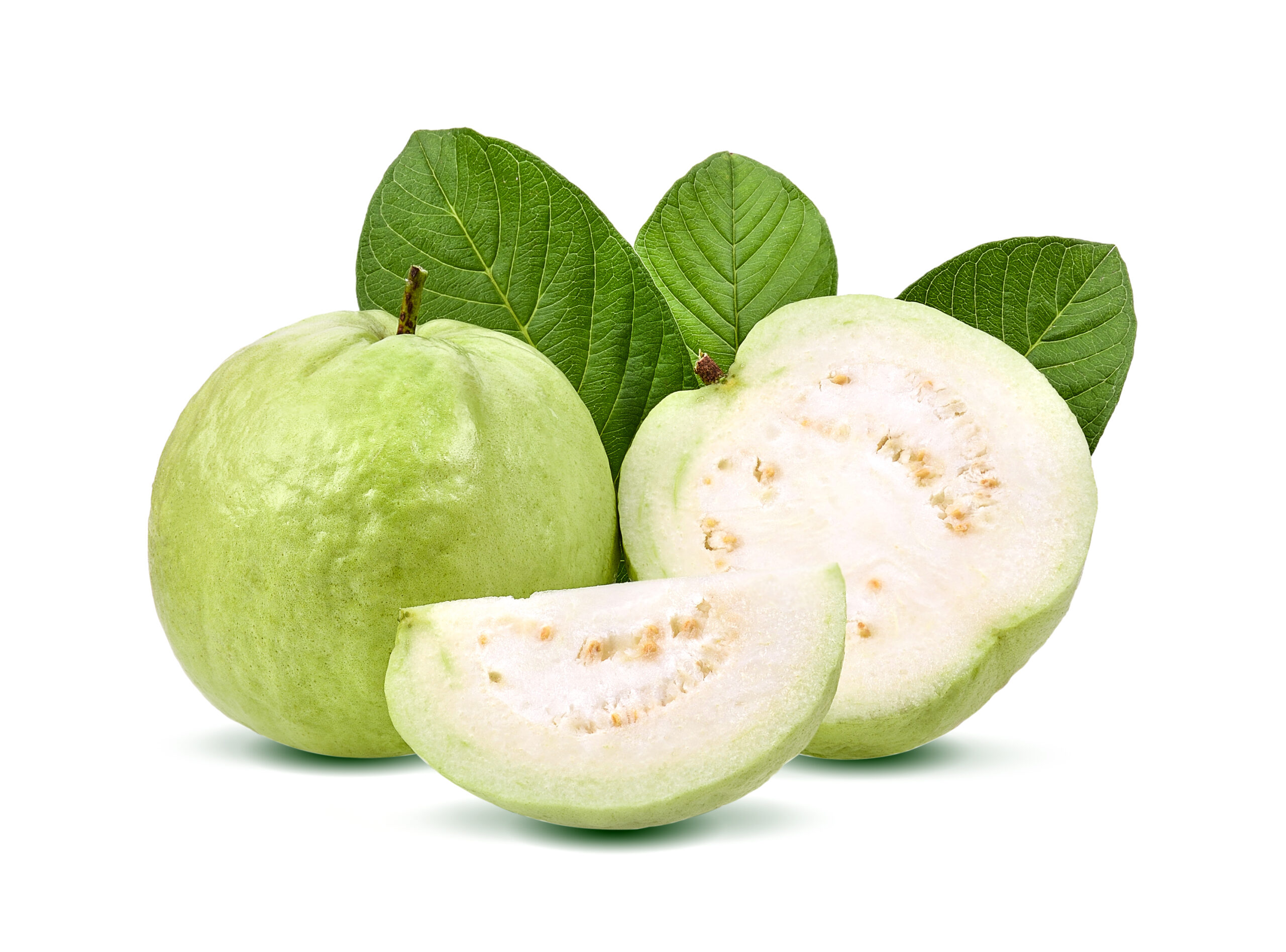
Guavas are very rich in vitamin C. One serving of guava, which is around half of a small guava, contains up to 242 mg of vitamin C. Guavas deliver more vitamin C than oranges; it has 152mg of vitamin C per 100 g, which is approximately 3 times more than oranges (53 mg of vitamin C per 100g).
Besides vitamin C, guavas are also rich in fibre and minerals such as potassium and calcium. (4,5)
- Kiwi
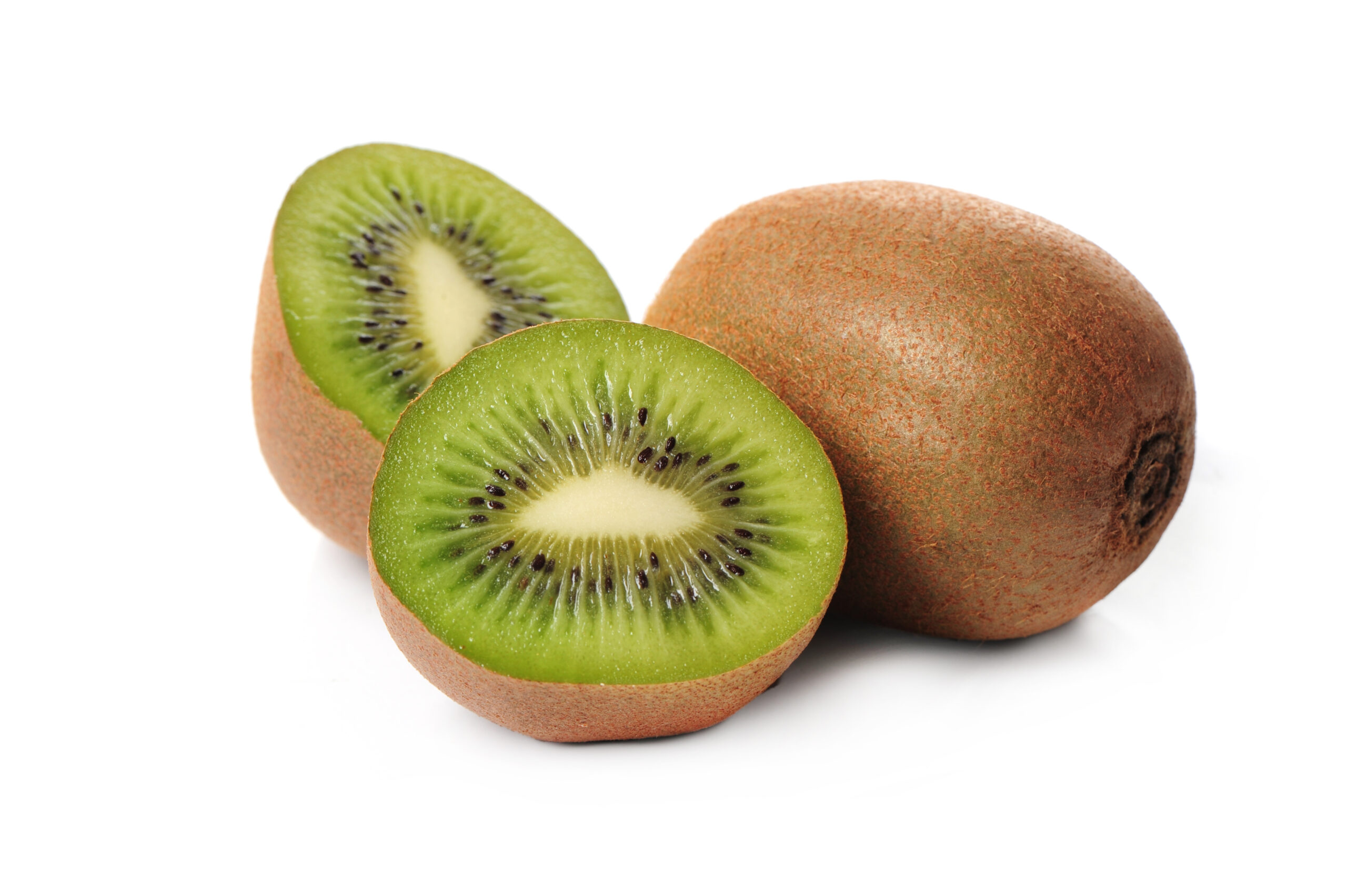
Kiwi fruits are also packed with vitamin C. One whole medium fruit has up to 135 mg of vitamin C. Comparing with oranges, it has 87 mg per 100 g, which is almost twice the amount of vitamin C oranges have (53 mg of vitamin C per 100g). Kiwi fruits are also rich in fibre and potassium. (4,5)
- Papaya
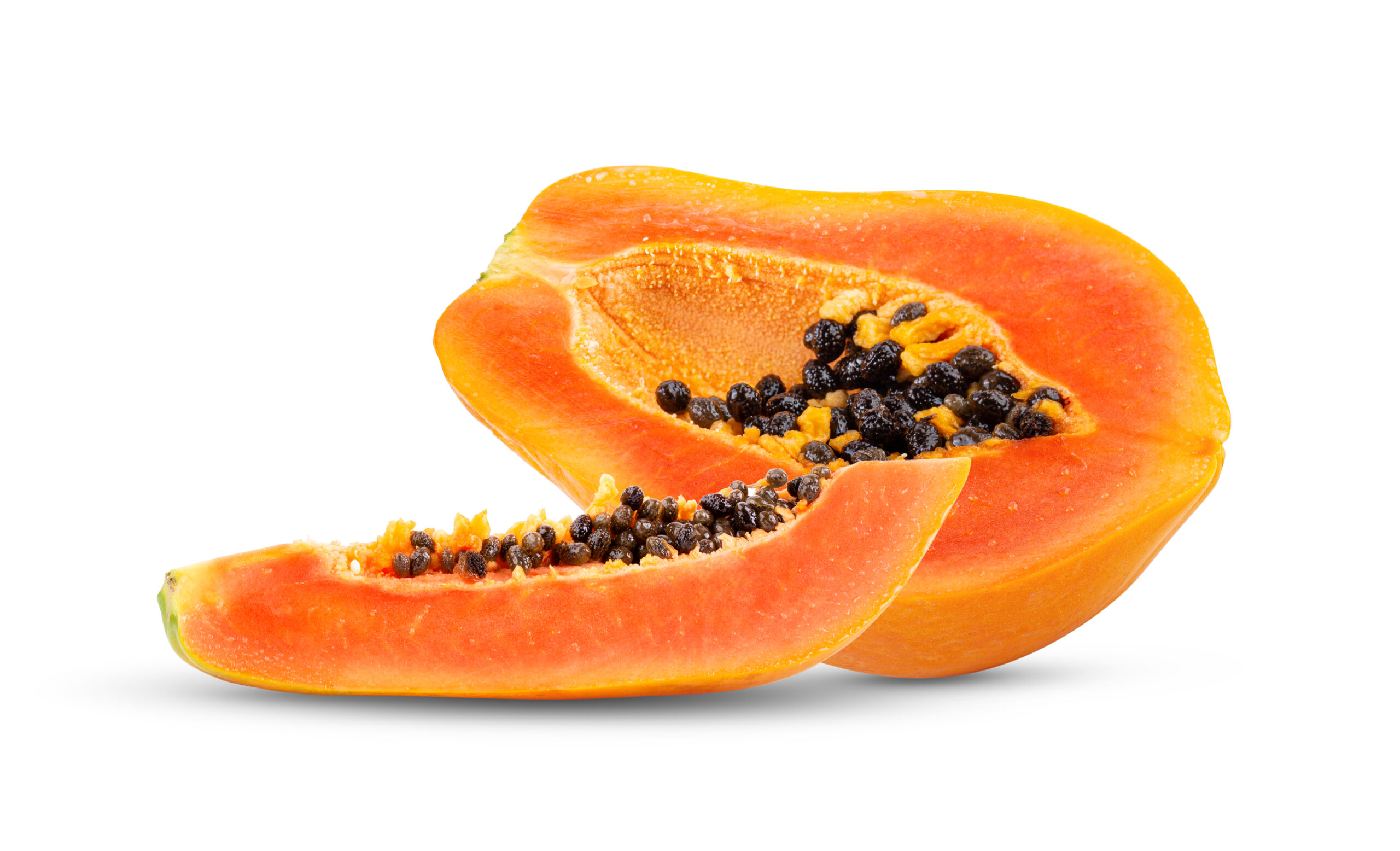
Papayas are one of the most commonly eaten fruits in Malaysia. A slice of papaya has up to 113 mg of vitamin C. Papayas have 72 mg of vitamin C per 100g, which is around 1.5 times more than oranges (53 mg of vitamin C per 100g). Besides that, papayas are also rich in vitamin A and phytonutrients such as lycopene and beta-carotene. (4,5)
- Strawberries
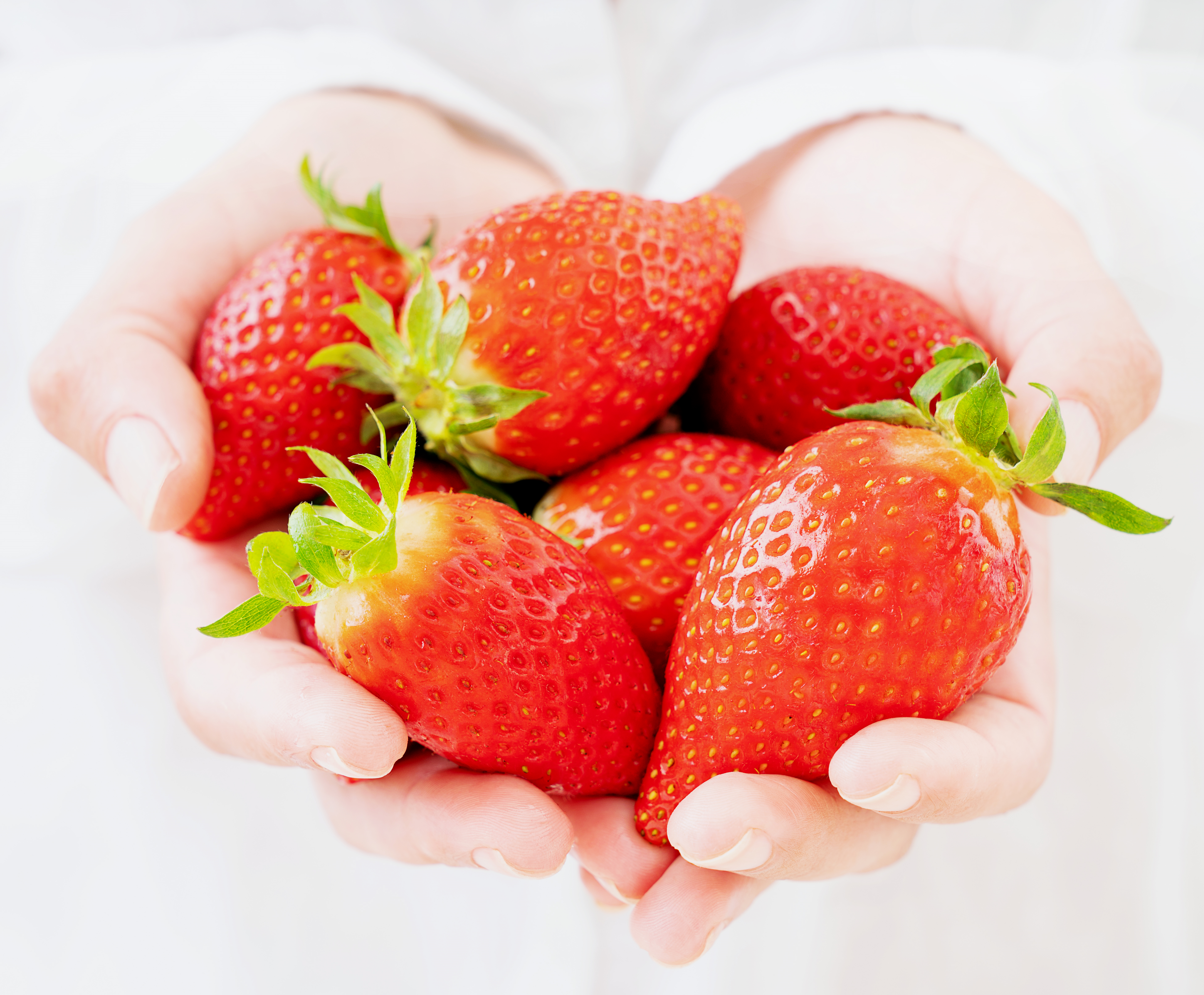
One serving of strawberries (around five whole strawberries) contain around 24.4 mg of vitamin C. The vitamin C content per 100 g of strawberries is approximately 52mg / 100g, which is similar to oranges (53 mg of vitamin C per 100g). (4,5) Strawberries are also rich in bioflavonoids, which have antioxidant properties. Antioxidants reduce inflammation by protecting the body against damage by free radicals, which is known to increase the risk of chronic diseases such as diabetes and heart disease. (6)
- Grape fruit
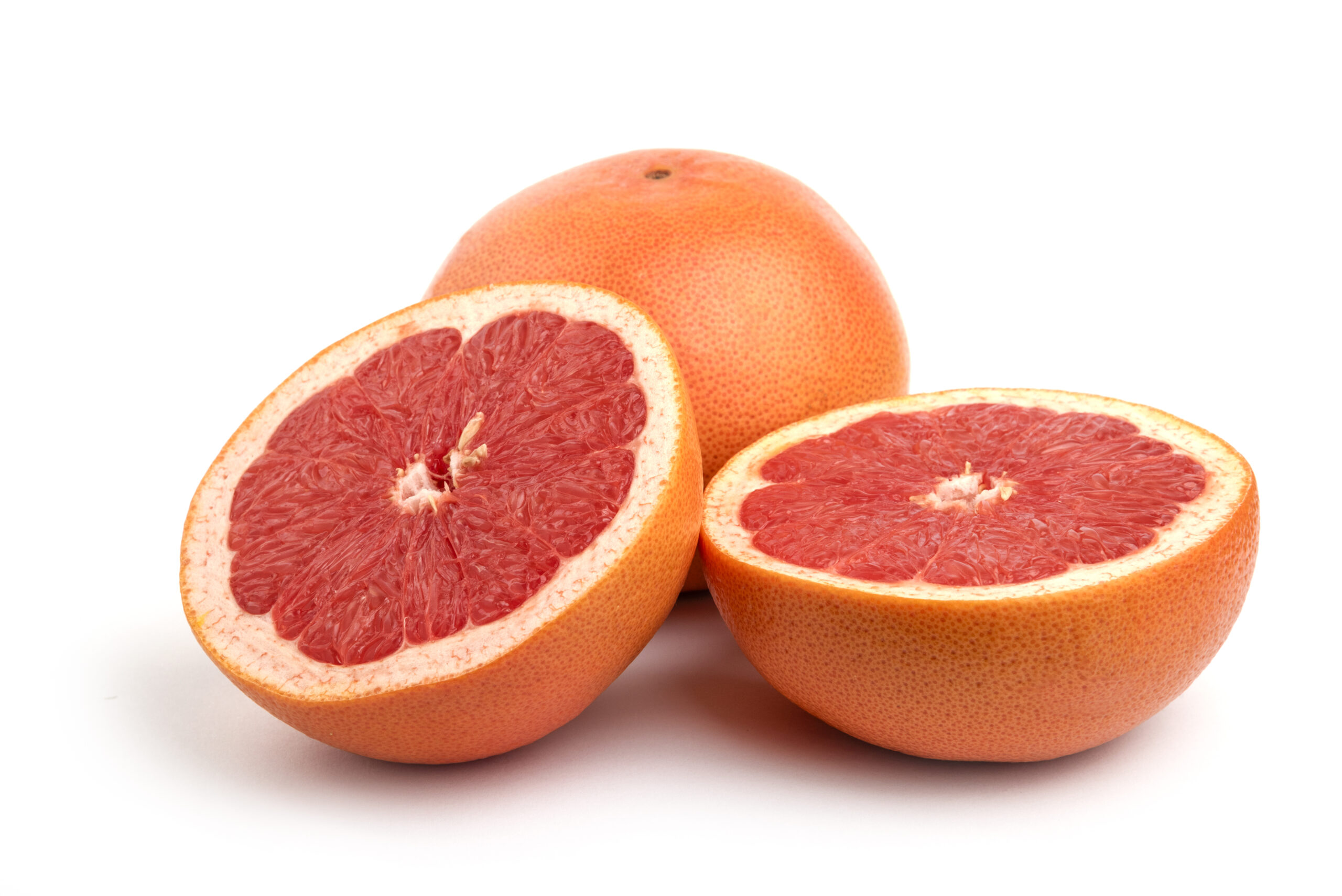
Grape fruits contain 34.4 mg of vitamin C per 100g. One serving of grapefruit, which is around half of a fruit has up to 88 mg of vitamin C. (5)
- Capsicum
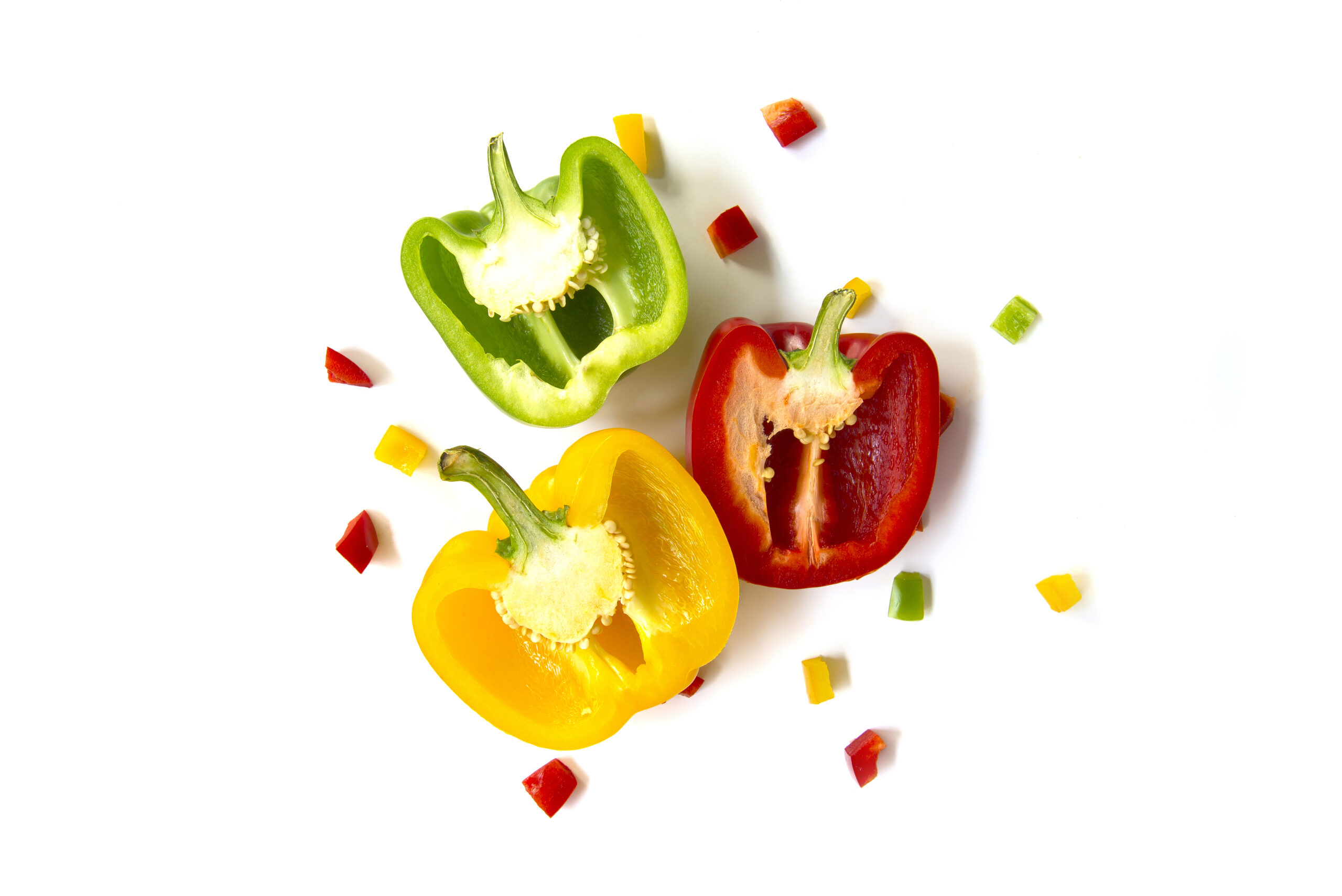
Capsicums or bell peppers are the most vitamin C rich vegetable sources. Each capsicum contains around 180mg to 240mg of vitamin C depending on the type of capsicum. Red and yellow capsicums (150mg vitamin C / 100g) tend to have a higher vitamin C content as compared to the green capsicum (112mg vitamin C/ 100g). Nevertheless, all types of capsicums have 2 to 3 times more vitamin C as compared to oranges. (4,5)
- Bitter gourd
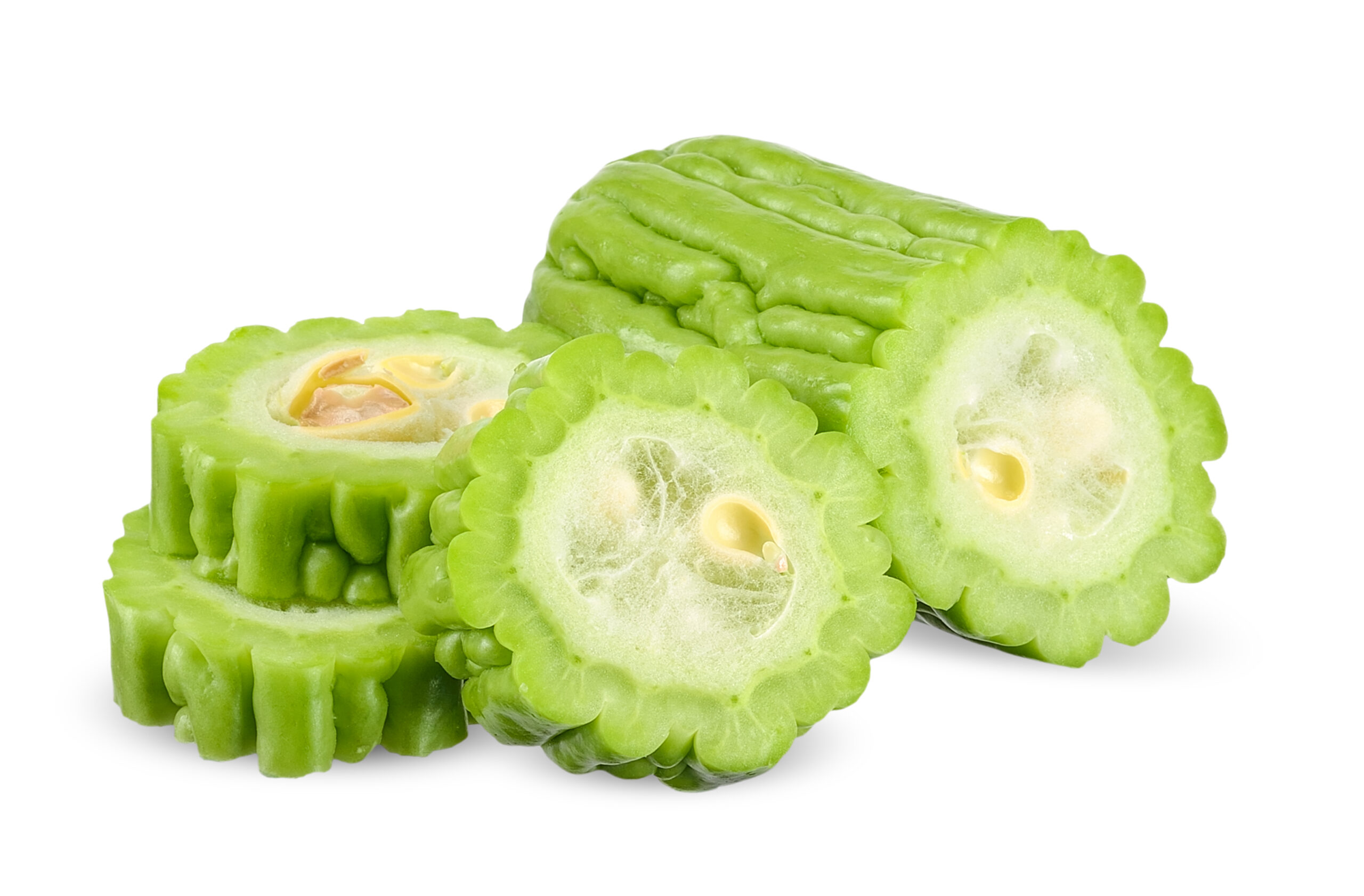
Bitter gourds contain a variety of vitamins and minerals such as vitamin C, vitamin A, potassium, and iron. It has around 53 mg of vitamin C per 100 g, which is similar to oranges. (4,5)
- Green leafy vegetables
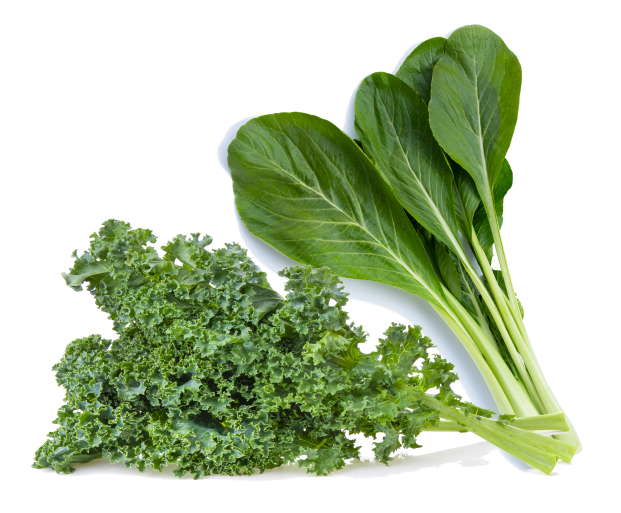
Kale contains up to 107 mg of vitamin C per 100 g while choy sum or mustard leaves contain around 89mg of vitamin C per 100g. Both vegetables have a higher vitamin C content as compared to of oranges. (4,5)
- Broccoli
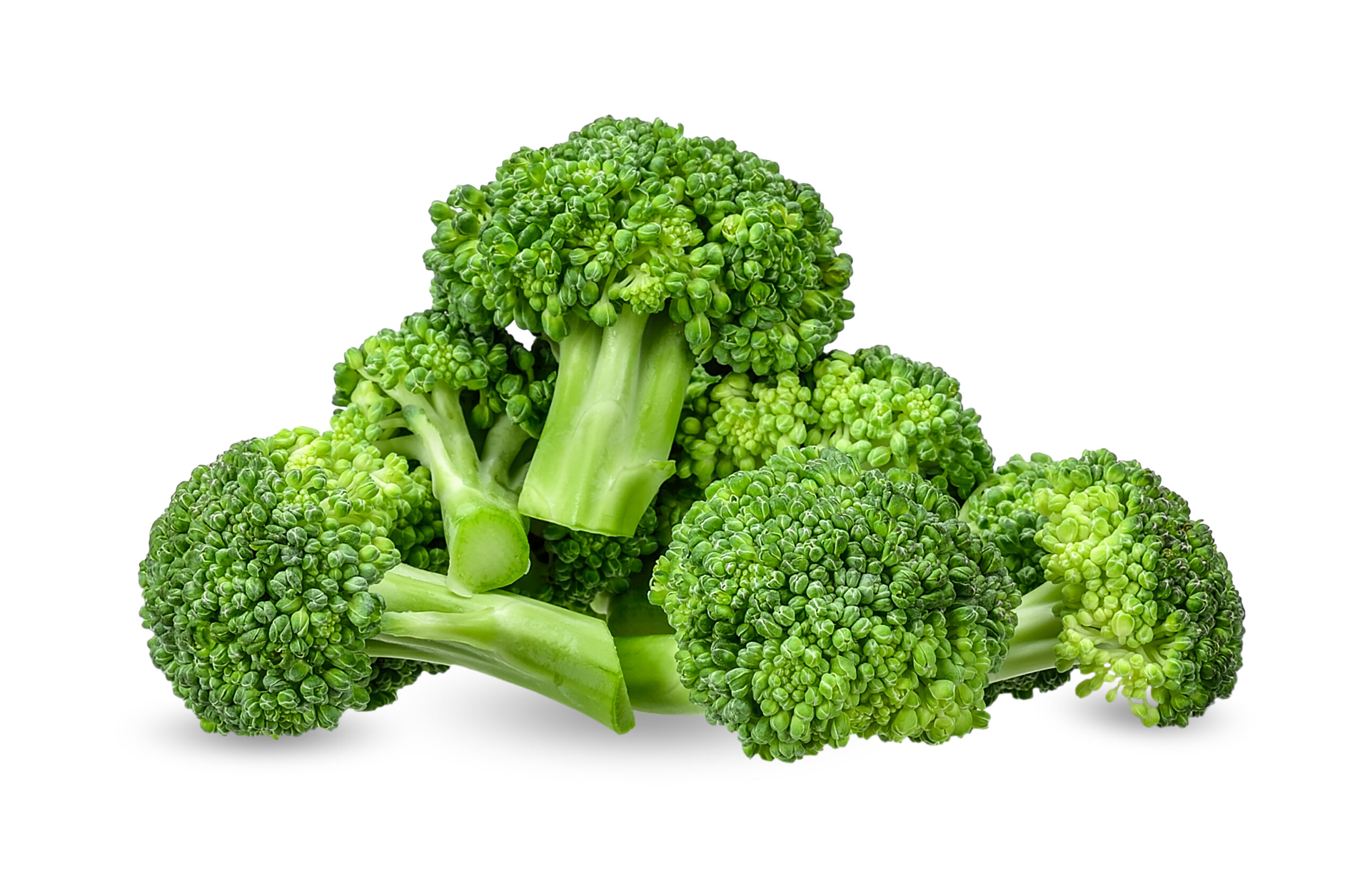
Broccoli is also packed with vitamin C and other vitamins and minerals. One cup of broccoli delivers up to 80 mg of vitamin C. Similarly to choy sum, a 100g of broccoli contains around 85 mg of vitamin C per 100 g which is approximately 1.5 times more than of oranges. (4,5)
- Cauliflower
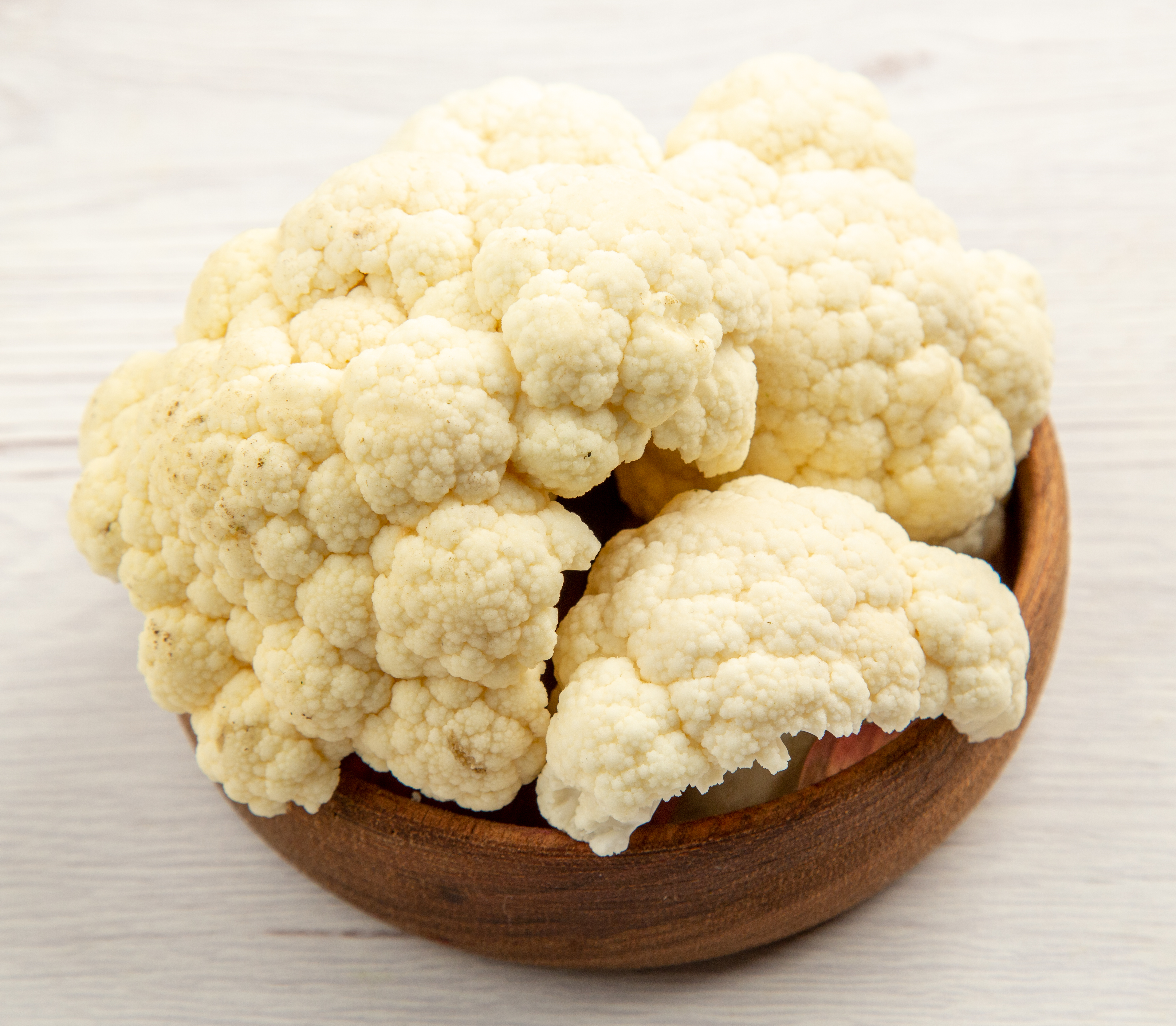
One cup of cauliflower contains up to 53 mg of vitamin C, which is lower as compared to one cup of broccoli. However, it is also one of the vitamin C rich vegetable sources. (4,5)
How to include them into your daily diet
- Make a healthy breakfast with a variety of fruits. You can add them into your oats, yoghurt or blend them into a smoothie bowl.
- Add more vegetables into your meals. Fill in half of your plate with a variety of vegetables. Always follow the Malaysian Healthy Plate Method or SukuSukuSeparuh
- Include a variety of vegetables when cooking. For example, instead of just stir-fry spinach, add in some carrots for variety
- When eating out, opt for economy rice or mixed rice as it’s easier to include more vegetables and healthier options into your meals
- Eat fruits as desserts instead of sweet foods.
- Eat fruits or vegetables such as carrot sticks as snacks.
Healthy recipes packed with Vitamin C
- Super C Fruity Salad
A salad bowl packed with antioxidants and delicious goodness!
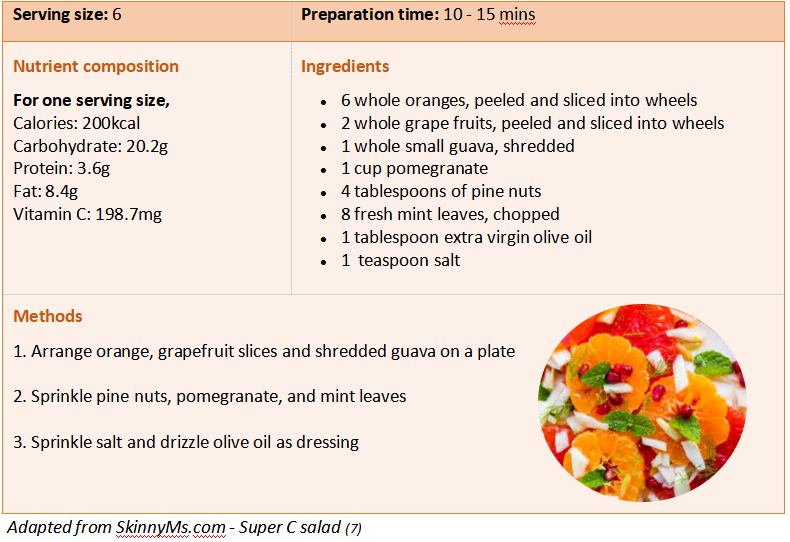
- Malaysian Stir-fry Mixed Vegetables
Easy stir-fry recipe packed with vitamins and minerals
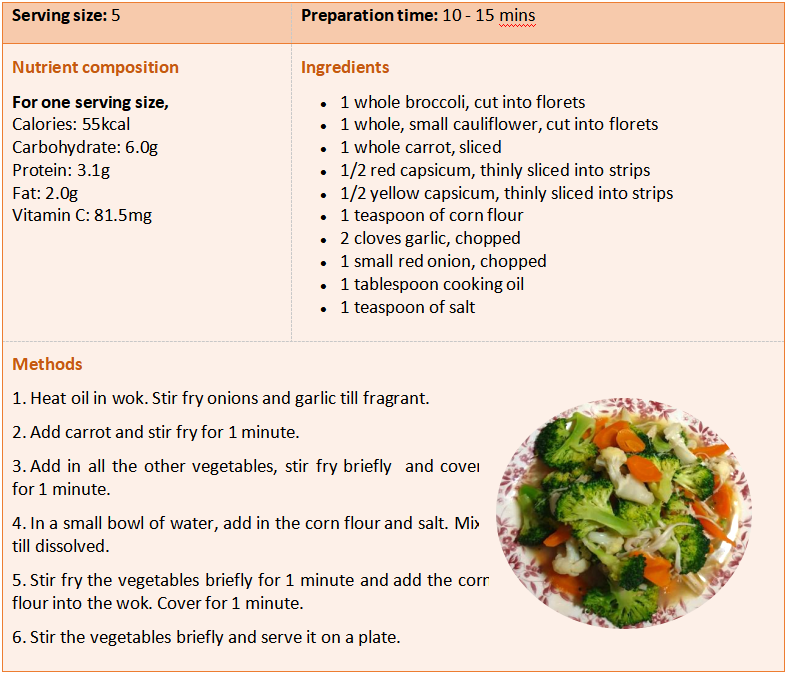
References
- Recommended Nutrient Intakes Malaysia 2017.Putrajaya: National Coordinating Committee on Food and Nutrition, Ministry of Health Malaysia; 2017.
- Zhang J, Rao X, Li Y, Zhu Y, Liu F, Guo G et al. Pilot trial of high-dose vitamin C in critically ill COVID-19 patients. Annals of Intensive Care. 2021;11(1).
- Sasazuki S, Sasaki S, Tsubono Y, Okubo S, Hayashi M, Tsugane S. Effect of vitamin C on common cold: randomized controlled trial. European Journal of Clinical Nutrition. 2005;60(1):9-17.
- Malaysian Food Composition Database [Internet]. Malaysian Food Composition Database. [cited 27 September 2021]. Available from: http://myfcd.moh.gov.my/
- Energy & Nutrient Composition of Food [Internet]. Food Composition System Singapore. [cited 27 September 2021]. Available from: https://focos.hpb.gov.sg/eservices/ENCF/
- Giampieri F, Tulipani S, Alvarez-Suarez J, Quiles J, Mezzetti B, Battino M. The strawberry: Composition, nutritional quality, and impact on human health. Nutrition. 2012;28(1):9-19.
- Super-C Salad [Internet]. Skinny Ms. 2015 [cited 27 September 2021]. Available from: https://skinnyms.com/super-c-salad-recipe/
Health Food
Health Food

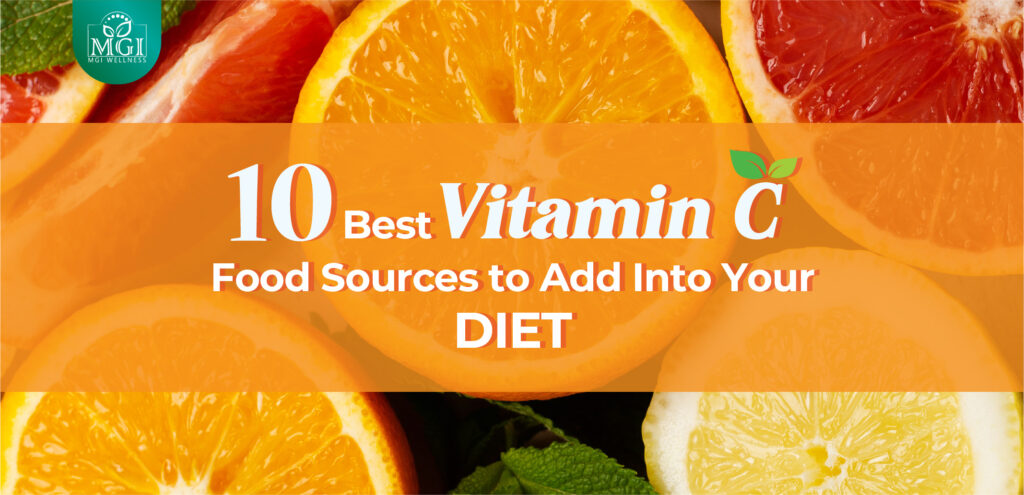
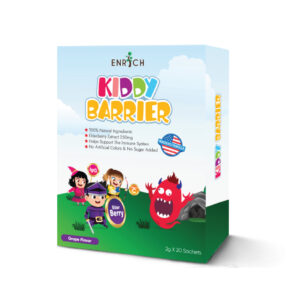
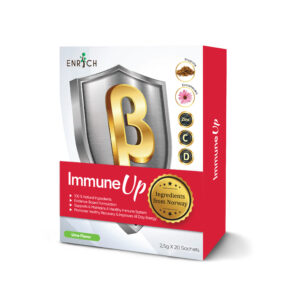
Thank you for the nice recipes !!
Thank you for your kind support!
Thank you for the helpful information! Now I will add more variety of fruits and vegetables into my meals.
Thank you for your kind support! Let’s practice a healthy lifestyle together.
I really like and appreciate your article post.Really thank you! Great.
Usually I don’t learn article on blogs, but I wish to say that this write-up very forced me to try and do so! Your writing taste has been amazed me. Thanks, very nice post.